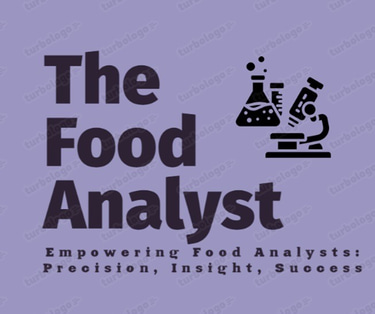"Empowering food analysts and laboratory professionals with expert insights, ISO 17025 resources, regulatory updates, industry testing requirements, training, and career opportunities for excellence in food testing."
Introduction to Food Safety
Food safety ensures that food is free from harmful contaminants and safe to eat. It protects public health, prevents foodborne illnesses, and supports trust in the food industry. Proper hygiene, handling, and storage, along with strong regulations, are essential for maintaining safety from farm to fork.
4/8/20253 min read
Food safety is a critical aspect of public health and consumer protection that ensures the food we eat is free from contaminants and safe for consumption. As the global population grows and the food supply chain becomes increasingly complex, maintaining food safety has emerged as a significant challenge and responsibility. It includes a range of practices and policies aimed at preventing foodborne illnesses, protecting consumer health, and fostering trust in food systems. The subject of food safety involves every step of the food journey—from farm to fork—including production, processing, packaging, transportation, storage, preparation, and consumption.
Definition and Importance
Food safety refers to the conditions and practices that preserve the quality of food to prevent contamination and foodborne illnesses. Unsafe food can contain harmful bacteria, viruses, parasites, or chemical substances, leading to over 200 diseases, ranging from diarrhea to cancers. According to the World Health Organization (WHO), an estimated 600 million people—almost 1 in 10 globally—fall ill after consuming contaminated food each year, resulting in 420,000 deaths.
Beyond health, food safety is vital to economic development. Outbreaks of foodborne illness can damage the reputation of food businesses, lead to food recalls, and cause substantial economic losses. Food safety is also essential for ensuring fair trade practices and consumer confidence in both domestic and international markets.
Key Hazards in Food
Food safety hazards can be categorized into three main types:
Biological Hazards: These include microorganisms such as bacteria (e.g., Salmonella, E. coli), viruses (e.g., Norovirus, Hepatitis A), and parasites. These are the most common causes of foodborne diseases.
Chemical Hazards: These can be naturally occurring (e.g., mycotoxins), introduced through agricultural practices (e.g., pesticides, veterinary drugs), or formed during processing (e.g., acrylamide).
Physical Hazards: These include foreign objects in food such as glass, metal fragments, stones, or plastic pieces that can cause injury or pose a choking risk.
Principles of Food Safety
To ensure food safety, certain foundational principles are followed:
Prevent Contamination: Proper hygiene and sanitation prevent food from becoming contaminated during handling and processing.
Separate Raw and Cooked Foods: This helps avoid cross-contamination, especially in kitchens and food preparation areas.
Cook Thoroughly: Proper cooking kills harmful microorganisms.
Store Food at Safe Temperatures: Keeping foods at appropriate temperatures inhibits the growth of pathogens.
Use Safe Water and Raw Materials: Water used in food production and raw materials must be free of harmful contaminants.
Food Safety Management Systems
To manage and control food safety risks, several systems and standards have been developed. Among the most widely used is the Hazard Analysis and Critical Control Points (HACCP) system. HACCP is a preventive approach that identifies, evaluates, and controls hazards that are significant for food safety. It involves:
Conducting a hazard analysis.
Identifying critical control points (CCPs).
Establishing critical limits.
Monitoring CCPs.
Taking corrective actions.
Verifying the system’s effectiveness.
Keeping detailed records.
Additionally, food businesses may adopt international standards such as ISO 22000, BRCGS (British Retail Consortium Global Standard), and FSSC 22000, which integrate food safety into quality management systems.
Global and National Regulatory Frameworks
Food safety is governed by international organizations such as:
World Health Organization (WHO)
Food and Agriculture Organization (FAO)
Codex Alimentarius Commission: Provides international food standards to protect consumer health and ensure fair food trade.
In India, food safety is regulated by the Food Safety and Standards Authority of India (FSSAI), established under the Food Safety and Standards Act, 2006. FSSAI sets science-based standards for food products, regulates their manufacture, storage, distribution, sale, and import, and ensures the availability of safe and wholesome food for human consumption.
Role of Stakeholders
Ensuring food safety is a shared responsibility. Key stakeholders include:
Government and Regulators: Establish laws, conduct inspections, enforce standards.
Food Industry: Implement food safety systems, train employees, maintain hygiene.
Consumers: Follow safe food handling practices at home.
Academia and Researchers: Develop new technologies and educate future professionals.
Media and NGOs: Raise awareness about food safety issues.
Challenges and Future Directions
Despite significant progress, food safety still faces several challenges:
Globalization of the food trade introduces new risks.
Climate change affects the prevalence of pathogens and toxins.
Urbanization leads to informal food markets with weak oversight.
Antimicrobial resistance (AMR) is an emerging threat from food-producing animals.
The future of food safety lies in adopting technological innovations like blockchain for traceability, AI for risk assessment, rapid detection kits for pathogens, and improved surveillance systems. Education and capacity-building at all levels—from farmers to food handlers—are also vital.
© 2025. All rights reserved. All content on this website is the intellectual property of The Food Analyst. Unauthorized use or reproduction is prohibited.
Contact Us
The Food Analyst Team
We are available in multiple locations:
Bangalore | Delhi | Mumbai
Email for editorial: contact@foodanalyst.in
For advertisement: inquiryfoodanalyst@gmail.com
